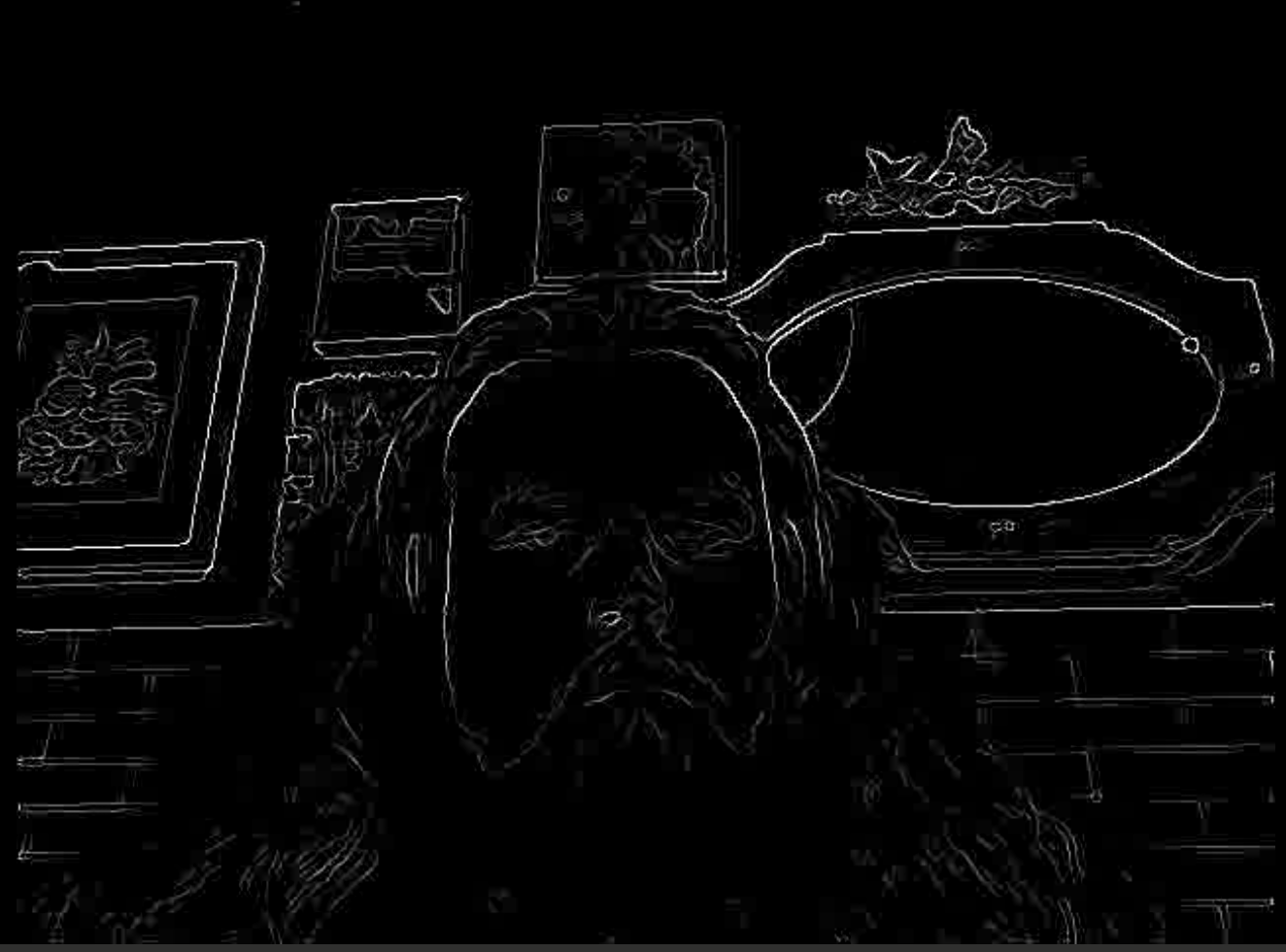
Painfully won, maybe this ffmpeg incantation can help
you, dear reader.
I’m working on a project at the moment that involves applying a
variety of digital effects to a webcam video stream. In my preparatory
research for the video effect tooling, I discovered that there’s
actually a fascinatingly large number of audio/video filters for
ffmpeg.
This solution appeals to me for a few reasons:
This solution also frightens me because ffmpeg is arcane and obscure (relative to most tools I like to use.)
So, I thought I’d write up what I did and how I learned it! Primarily so that I can use it in the future for my own reference.
The google results for “stream ffmpeg webcam video stream” are mostly unsolved requests for help on stack-overflow 🙃
However, there are some useful tidbits here and there.
First, we need to know what our device is called, according to
ffmpeg. On Linux, this can be done with
v4l2-ctl --list-devices (I had to install the
v4l-utils package on Fedora.)
On my system, the default webcam is /dev/video0. So let’s test to see if we can simply record from the webcam to a file:
ffmpeg -f v4l2 -i /dev/video0 output.mp4 I’d call that a success!
The simplest thing here is to use one process to create a video stream, and another to open it. This way our capturing ffmpeg incantation isn’t too long.
To stream:
ffmpeg -f v4l2 -i /dev/video0 \
-framerate 25 \
-video_size 1280x720 \
-f mpegts udp://localhost:1234We can open up the stream with a simple
ffplay -fflags nobuffer udp://localhost:1234.
(-fflags nobuffer removes a ~10 second buffer that ffplay
adds for some reason.)
now we can review the ffmpeg documentation, specifically the video filters.
Let’s try this out.
ffmpeg -f v4l2 -i /dev/video0 \
-framerate 25 \
-video_size 1280x720 \
-vf edgedetect \
-f mpegts udp://localhost:1234Run ffplay -fflags nobuffer udp://localhost:1234 again,
and let’s see what the result is…
Success! We’ve got edge detection working:

ffmpeg -filters gives us a list of all the filters that
exist in our installed copy of the utility - any that are marked
V->V are video-to-video, and we can experiment to see
what cool stuff we can find. waveform and elbg
are both interesting - this is gonna be the fun part.
I want to speed up trying out new filters. It’d be very nice if I
could simply type out a filter name, maybe some parameters, and hit
CR to see the results immediately. This is all to preface
the following very bad, no-good, totally incorrect, inflexible,
“works-on-my-machine”, highly effective script (provided in large part
by chatGPT.)
#!/bin/bash
# handle termination signals and kill both processes
terminate_processes() {
echo "Terminating processes..."
kill -TERM "$pid1" "$pid2" 2>/dev/null
wait "$pid1" 2>/dev/null
wait "$pid2" 2>/dev/null
exit 0
}
# Trap termination signals
trap terminate_processes SIGINT SIGTERM
# Run the ffmpeg command to capture and stream the webcam in a terminal window and store its process ID
alacritty --command ffmpeg -f v4l2 -i /dev/video0 \
-framerate 25 \
-video_size 1280x720 \
-vf "$1"\
-f mpegts udp://localhost:1234 &
pid1=$!
# Run the ffplay command in a terminal window and store its process ID
alacritty --command ffplay -fflags nobuffer udp://localhost:1234 &
pid2=$!
# Wait for either of the commands to finish
wait -n "$pid1" "$pid2"
# If one process is terminated, kill the other one
terminate_processesIt works perfectly for me :)